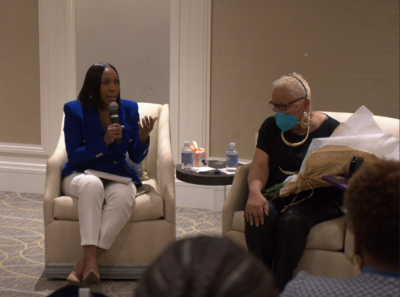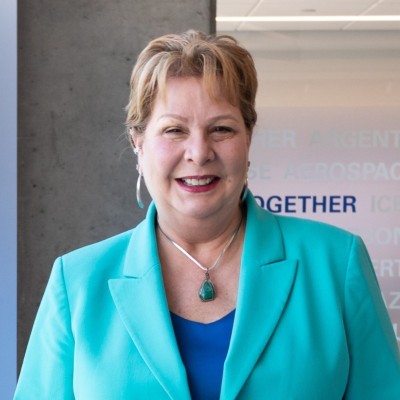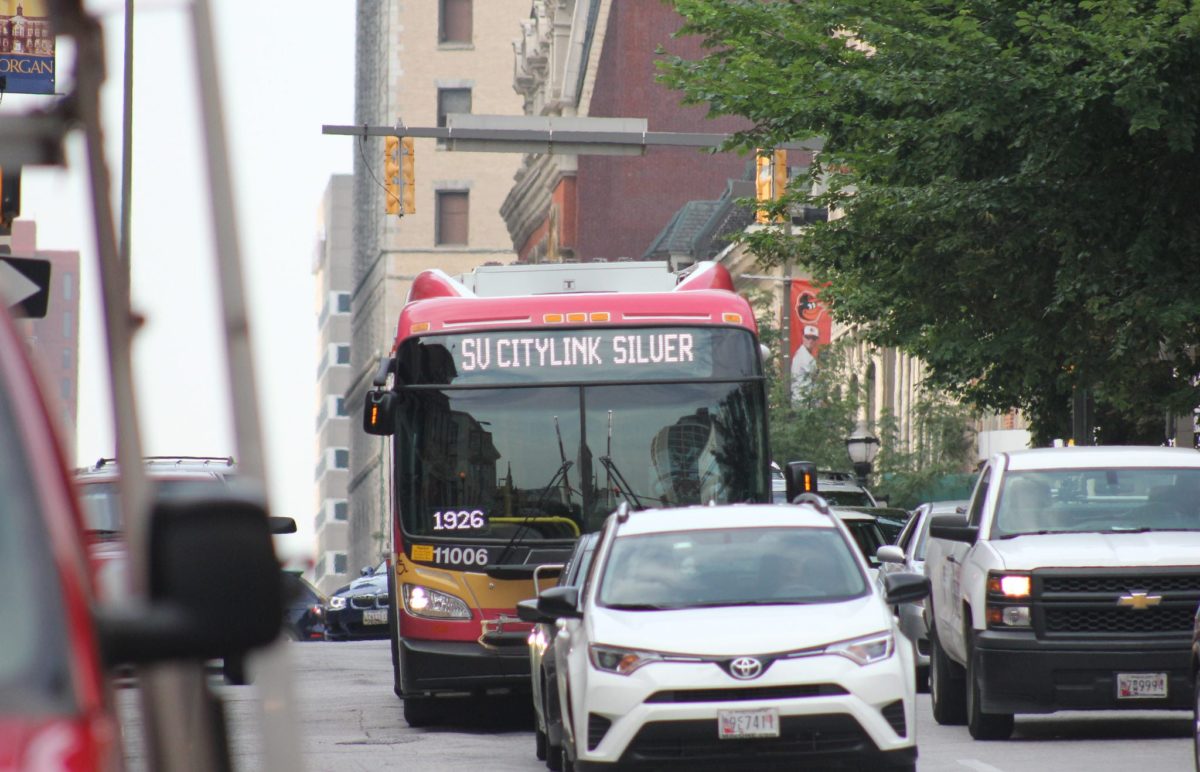In a few days’ time, Baltimoreans gained two sources to track the on-time performance of buses this month. Following the debut of a site by transit advocate and software developer Brian Seel, the Maryland Transit Administration (MTA) launched a new performance improvement webpage.
Seel launched a site called [Bmore] Transit Tracker May 21 that displays charts on the performance of MTA buses during April. It collects real-time GPS data from buses, which became available when the MTA’s partnership with the Transit app began last year.
Two days later, the MTA launched a searchable database of its own.
“I was happy they did it,” Seel said. “If they decided to put out their own dashboard because I did this, I consider it a huge win.”
Seel’s project began at the sixth Baltimore Hackathon in March, where he was a part of a team of four. They made the dashboard to push for accountability and transparency at the MTA, which has been criticized for its reluctance to publish data and for quietly redefining what counts as on time. The team won the prize for the best civic tech project, as well as the prize for fan favorite. Seel said he’s handled about 85% of the work since the hackathon.
Brittany Marshall, MTA’s Director of Media Relations, said her office would “not be able to do a phone interview,” but she responded to some questions with an emailed statement.
“MDOT MTA recognizes the importance of transparency to our riders,” the statement read. “The performance improvement webpage has been re-designed to increase transparency and accountability by allowing our riders unprecedented access to the historical on-time performance of each of our core bus routes.”
The statement did not say to what extent the efforts of Seel and other advocates influenced their decision to launch the site.
“An integral part of MDOT MTA’s mission is the ability to deliver service on time,” MDOT MTA Administrator Kevin Quinn said in a statement May 23. “The goal of this new webpage is to increase transparency with our riders, ensure accountability for our agency and demonstrate the impacts of technology improvements on our overall system.”
A screenshot of [Bmore] Transit Tracker. (Courtesy photo)
“It looks like the data I’m seeing is basically the data they’re seeing, plus or minus 3%,” he said.
Seel decided to use arrival times, rather than departure times, which the MTA uses, to determine on-time performance. That creates some variation in their numbers.
“As a rider I care more about when it gets there,” Seel said.
Marshall stated that as of the launch of the BaltimoreLink system in June 2017, MTA considers buses on time if they are between two minutes early and seven minutes late. That’s three minutes wider than the previous window. Some said that change in definition was announced too quietly.
Writer and transit advocate Danielle Sweeney wrote in January 2018 that there was confusion about what counted as on time. She wrote MTA had reported LocalLink as high as an 85% on-time performance rate.
Sweeney quoted Del. Brooke Lierman (D-Baltimore City) as asking Quinn, “Why do the numbers keep changing?”
[Bmore] Transit Tracker is a web-based dashboard that allows the user to search bus data, and stores it in a database.
The MTA partnered with Transit app to allow riders to see the location of their bus, meaning they don’t have to rely on the hope that the bus will arrive on schedule. But it didn’t regularly publish long-term data about how the buses were performing.
While working on [Bmore] Transit Tracker, Seel said he met with MTA employees several times to compare and verify data.
“The MTA’s been pretty helpful,” he said. “I know that they knew I was working on this.”
During this time, Seel said there was “a point where they were much more willing to engage with me.”
Why didn’t the MTA just use Seel’s open-source work?
“Ultimately their numbers are better,” he said. “Their Swiftly dashboard is way better.”
Seel said he’s spending about $100 per month to manage the app, and hopes to share the cost with an organization or through crowdfunding.
Join the conversation!
Find news, events, jobs and people who share your interests on Technical.ly's open community Slack

This Black gaming advocate has a mission to transform education through esports

This Week in Jobs: Get out there with 22 new job opportunities available to you!

This national network empowers Black nonprofit leaders through community, capital and capacity


